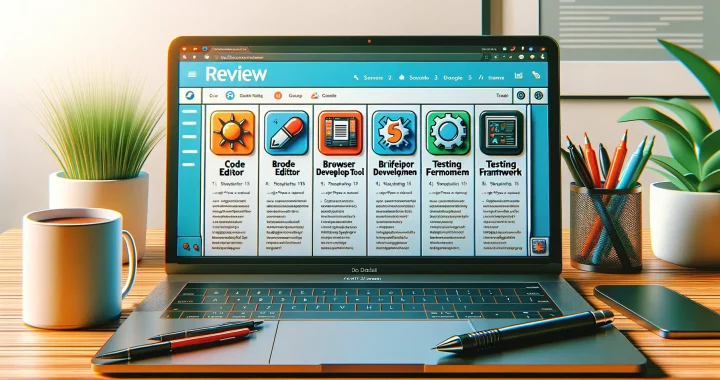Essential Features of Modern Web Development Tools
What Makes Web Development Tools Stand Out?
When it comes to modern web development tools, the best ones feel less like just software and more like a superpower in your toolkit. They streamline your workflow, simplify complexity, and turn lofty ideas into pixel-perfect realities. But what separates the winners from the rest?
First off, speed is non-negotiable. Today’s tools must be as sharp as a chef’s knife and twice as precise. Nobody wants to watch their code compile for eternity. That’s why features like real-time previews and auto-reloading are often hailed as lifesavers. For example, seeing your design come alive instantly without refreshing the browser? Absolute magic.
Then, there’s flexibility. The perfect tool dances effortlessly between tasks—whether you’re whipping up a simple landing page or architecting a dynamic web application. Look out for these key must-haves:
- Cross-platform compatibility that lets you work from anywhere, on any device.
- Customizable templates, because starting from scratch isn’t always fun.
- Easy integration with libraries and third-party plugins for added functionality.
At the end of the day, the ultimate feature? It’s all about enabling *you* to focus on creativity—not wrangling with tedious setup or debugging endlessly.
Review of the Top 5 Web Development Tools

Why These Tools Deserve the Spotlight
Choosing the right web development tool can feel like picking the perfect spice for your favorite dish—it changes everything! After diving headfirst into hours of testing and tinkering, I’ve uncovered five standouts that truly shine in 2024. Let’s break them down.
1. Visual Studio Code: If coding had a best friend, this would be it. Known for its lightning-fast performance and endless integrations, VS Code feels like home for beginners and veterans alike. Its built-in Git support? A game-changer when you’re knee-deep in version control chaos.
2. Webflow: Oh, the magic of no-code! Webflow is every designer’s dream turned reality, where aesthetics meet functionality. It’s like painting a masterpiece, except your brush is drag-and-drop.
3. GitHub Copilot: Think of it as your personal coding assistant—a futuristic genie granting coding wishes one line at a time. It predicts your next move with eerie accuracy!
- Streamlined workflows mean you spend less time debugging.
- It’s even helpful for those “Wait, what was that syntax again?” moments.
4. Figma: Technically a design tool, but I dare you to find a developer not collaborating here. It’s the bridge between design ideas and execution, making teamwork feel harmonious.
5. Bootstrap: The old faithful of responsive design. Whether you’re building a stunning portfolio or a sleek e-commerce site, Bootstrap ensures your project looks good on every screen imaginable.
Each tool dazzles in its own way—some feel like magic wands, while others are trusty hammers essential for every toolkit.
How to Choose the Right Web Development Tool for Your Project

Discovering Your Project’s Unique Needs
Choosing the perfect web development tool is like finding the right pair of shoes—it needs to fit your project’s size, style, and stride. First, ask yourself: “What does my project need to flourish?” Are you creating a sleek portfolio website or a dynamic e-commerce platform bustling with features? For design-driven projects, tools like Webflow might charm you with their visual-building prowess. But if performance optimization is non-negotiable, something robust like React.js could be your champion.
Next, think about your own skillset—or your team’s. A beginner would thrive with intuitive, drag-and-drop builders, while seasoned developers may demand the flexibility of frameworks offering deep customization.
Key Features to Watch For
When narrowing down your options, look for these essentials:
- Scalability: Will this tool grow with your project as it expands?
- Integration-friendly: Can it seamlessly work with other software or APIs?
- Ease of use: Does it empower you, or does it bury you in complexity?
Your perfect match is out there—choose a tool that resonates with both your project vision and practical needs.
Benefits of Using Advanced Web Development Tools

Unlocking the Power of Development Efficiency
Imagine trying to build a skyscraper with only a hammer and some nails. Sounds exhausting, right? That’s what web development feels like without the magic of advanced tools. These tools don’t just save time—they supercharge your creativity, helping you churn out sleek, responsive websites that *wow* your users. Thanks to features like automated coding and real-time debugging, you can focus on the fun parts of building, not the frustrating ones.
With the right tools, tasks that used to take hours can be done in minutes. Just think about code suggestions that feel like a teammate reading your mind or seamless integration options that make connecting APIs child’s play. And the best part? They’re designed to fit projects big and small, from personal blogs to enterprise-level eCommerce sites.
- Collaborative coding: Work in sync with your team across different locations.
- Enhanced security: Say goodbye to vulnerabilities with built-in protection features.
- Customization galore: Tailor designs and functionalities with zero limits.
Advanced tools don’t just change how you develop—they redefine what’s possible. Why settle for less when you could have magic at your fingertips?
Conclusion and Expert Recommendations

Why These Tools Are Game-Changers
In the fast-paced world of web development, choosing the right tools isn’t just a preference—it’s the difference between breezing through your project and pulling all-nighters wrestling with bugs. Each of the Top 5 Web Development Tools for 2024 we reviewed offers something unique, whether it’s time-saving integrations or razor-sharp design capabilities. But let’s be real: not every project needs a Swiss Army knife. Sometimes, a well-honed blade is all you need.
Here’s where these tools shine:
- Visual Studio Code works like a trusty co-pilot, with smart code suggestions that almost read your mind.
- Figma, on the other hand, makes designers feel like artists at the peak of their creative flow.
- And don’t sleep on Webflow—it’s practically witchcraft how it lets you build stunning websites without writing a single line of code.
Your Next Steps—Tailored to You
Think about what’s most important for your specific project. Need seamless team collaboration? Go for tools with robust cloud features like GitHub. Working solo but hate repetitive coding? Automation-packed options like CodePen might save your sanity. Whatever you choose, investing in the right tool now is like sharpening your axe before chopping wood—it saves time, frustration, and catches those pesky bugs before they throw a wrench in your plans.

